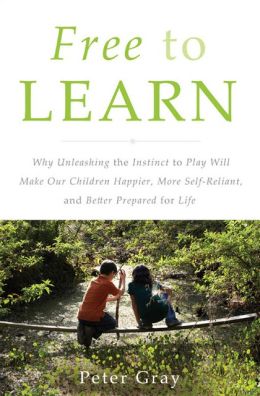The Big Lie in America
January 14th, 2014 // 10:00 am @ Oliver DeMille
The Big Lie dominates Washington and much of our American culture. The lie, in a nutshell, argues that as government increases regulation, our society improves.
This lie has lasted a long time, mainly because our society is divided between two versions of The Big Lie. The Democratic version contends that as the government increases regulation on various sectors of society and the economy, our nation progresses. The Republican version maintains that as the United States expands it power around the globe, the whole world benefits.
Both lies are passed down to the rising generations, despite the fact that there is a preponderance of evidence that debunks them.
For example, the Republican Big Lie claims that after each major war (WWI, WWII, Korea, Vietnam, and the Cold War) U.S. leaders have reduced military budgets and hollowed our national defense — and that this has inevitably helped contribute to continued world conflict.
The evidence, however, tells a different story. In times of reduced military budgets, the Executive Branch has actually upped its strategic planning.
Indeed, as Melvyn P. Leffler put it in Foreign Affairs:
Decreased military budgets “forced U.S. policy makers to make tough but smart choices…to think hard about priorities and tradeoffs…And in this regard, history shows that austerity can help rather than hurt…”
The same is true of the Democratic Big Lie. For example, few things have been pursued by Democratic leaders as doggedly as the desire to increasingly regulate big banks, big business, and big health care.
But such policies have caused more harm than good. To date, we have little data about what Obamacare regulation will do to the economy, but there is ample information about banking regulation and its results.
As Charles W. Calomiris and Stephen H. Haber pointed out, nations that highly regulate their banks have experienced less stability and more banking crises than those with fewer regulations. For example, when Britain and Scotland adopted central banks in 1694 and 1695, respectively, both were ruled by King William III.
The King treated the two banking systems very differently, and the results were drastically different as well. Because William III saw the Bank of England as the source of his government’s borrowing, he wanted to regulate it to ensure access to easy capital. In contrast, he thought it “was easier to adopt a policy of laissez faire with respect to the Scots…”
The results are interesting, and instructive. Under the weight of extensive regulation, the English banking system was usually “fragmented,” “unstable” and “England suffered frequent major banking crises…In sharp contrast to England, Scotland [with it’s free, less regulated banking system], by the middle of the eighteenth century, had developed a highly efficient, competitive, and innovative banking system, which promoted rapid growth” in the economy.
In short, higher regulation hurt the economy, while less regulation helped it.
This same pattern was repeated by U.S. and Canadian banks, with the U.S. banks highly regulated and Canadian banks operating under less regulation.
Again, The Big Lie is that government regulation makes things better, but the evidence shows a different reality.
Calomiris and Haber noted:
“The banking system in the United States has been highly crisis prone, suffering no fewer than 14 major crises in the past 180 years. In contrast, Canada…experienced only two brief, mild bank…crises during that period…The Canadian banking system has been…so stable, in fact, that there has been little need for government intervention in support of banks since Canada’s independence, in 1867.”
What is the difference? The Canadian banks were set up, like in Scotland, as free and independent banks, while the U.S. banking system was established like the British model as a highly regulated source of ready capital for the federal government. As a result, Washington continues to increase banking regulation — which nearly always hurts the American economy.
The biggest problem in all this was pointed out by Murray Rothbard in his classic book, The Mystery of Banking, first published in 1983. Rothbard argued that few people understand banking, or how the government works with banks, and so they ignore what is really happening and just let it keep occurring. The connection of banks and the government in a highly-regulated system, Rothbard warned, decreases our freedoms and weakens our economy.
But since most people don’t even think about this, or consider it too complex, it just keeps happening. The truth is that banking really isn’t that much of a mystery, but most people find it too boring to study.
That’s how The Big Lie survives. It’s big, but it’s a bit boring. So the people don’t stand up against it. That’s how it starts.
But in our time, it’s reached another level. Now, in reality, most people actually seem to believe The Big Lie. They actually believe that government regulating something will make it better. They believe that more government regulations on banks will help the economy (truth: it does the opposite), that more government regulations on business will bring more jobs (truth: it does the opposite), and that more Obamacare regulations on health care will bring cheaper, better insurance and health (truth: it is doing the opposite).
The Big Lie is strong and growing in America. And the more it grows, the more it ensures the decline of our economy.
Those who point it out, from either the Right or the Left, or the middle, are simply ignored by most Americans. As a result, it is very difficult to fix the problem.
We are a nation in denial. We think more government will fix things, and so it grows. As it grows, it causes more problems.
And the cycle repeats.
At some point, we need to face The Big Lie. More government regulation from Washington won’t fix our nation. More government power from Washington won’t fix other nations.
We need to apply principles, not increase regulation. The principles of freedom work. We need them. Most of all, we need the average American to study them and understand them.
 Oliver DeMille is the New York Times, Wall Street Journal and USA Today bestselling co-author of LeaderShift: A Call for Americans to Finally Stand Up and Lead, the co-founder of the Center for Social Leadership, and a co-creator of TJEd.
Oliver DeMille is the New York Times, Wall Street Journal and USA Today bestselling co-author of LeaderShift: A Call for Americans to Finally Stand Up and Lead, the co-founder of the Center for Social Leadership, and a co-creator of TJEd.
Among many other works, he is the author of A Thomas Jefferson Education: Teaching a Generation of Leaders for the 21st Century, The Coming Aristocracy, and FreedomShift: 3 Choices to Reclaim America’s Destiny.
Oliver is dedicated to promoting freedom through leadership education. He and his wife Rachel are raising their eight children in Cedar City, Utah.
Category : Blog &Government &History &Leadership &Liberty
The Only Two Ways to Fix Washington
January 9th, 2014 // 10:00 am @ Oliver DeMille
 Washington is broken, and the problem is short-term thinking.
Washington is broken, and the problem is short-term thinking.
In our current system, there is little or no incentive for our leaders to do what is right for the next generation — if it in any way conflicts with immediate concerns.
We know debt is bad, but in the short-term it’s easier to keep spending. And we realize that deficits are a problem, but it’s easier to ignore this problem and keep raising the debt ceiling.
This problem is systemic. For example, our business world is too often dominated by “Quarterly Capitalism,” which means that most companies manage their business one quarter at a time. The cause of this is the way our tax system is structured, with the government forcing this quarterly approach on business.
Likewise, nearly all politicians are required to adopt what Al Gore called “Quarterly Democracy.” Specifically, everyone raising money for political campaigns must report quarterly on how much they’ve raised, and this drives future fundraising and influences media support and opposition of each candidate.
As a result of these quarterly laws enforced by Washington, our business and political leaders are legally required to focus on the short term.
This is a serious problem. It impacts our national finances in a very damaging way. Anytime anyone — from either party or no party — suggests real solutions to current financial challenges, from budgets and debts to deficits and entitlements and debt ceilings and credit ratings, it is quickly ignored or rejected because real solutions can’t be implemented in 90 days or less.
This is a fundamental structural weakness of our current system of governance. Even when party or government leaders agree with a proposed solution, they can’t fit it in to the 3-month cycle and therefore it is always put on the back burner while they focus on immediate issues.
The framers incentivized the masses to think in annual election cycles, the House in two-year cycles, the Executive in four-year cycles, and the Senate in six-year cycles. These concentric cycles encouraged short-, intermediate-, and long-term thinking all at once.
Today, in contrast, pretty much all of our elected officials and business leaders tend to think in 90-day cycles, and the people have been sucked in to this pattern.
In fact, the masses of citizens, who are mostly now required by law to follow the monthly, bi-monthly, or even weekly pattern of paying taxes and bills with every paycheck (instead of annually when all revenues and expenditures are totaled for their businesses or farms), are widely caught in a paycheck-to-paycheck cycle. Indeed, they think monthly, while their leaders think quarterly.
The one group that was supposed to provide truly long-term thinking, the Supreme Court, has frequently done so on social issues but for the last few decades has failed to do so in financial matters. There are few indications that this will change any time soon.
This all benefits the wealthy elite, who do apply a long-term approach and thereby easily rule the rest of society that is caught in a “rat race” of short-term activity and confusion. Faulkner appropriately called it a “sound and fury.”
Hardly any American leaders today are focused on the next thirty years, taking effective actions that will create lasting national progress. In contrast, many leaders in China and India speak in terms of 50, 100 and even 200 years.
Canadian business leader Claude Hamilton called attention to last summer’s meeting between the presidents of the U.S. and China. In their opening remarks, the Chinese president noted China’s great progress over the past two centuries, and outlined Chinese goals for the decades and century ahead. Then President Obama responded by outlining the major contributions of his Administration during the past four years.
The contrast is glaring. We don’t really think about the future, at least not in terms of taking real action. If we did look ahead in any serious way, we’d see the absolute necessity of fixing our fiscal, monetary, entitlement, debt and budgetary problems. We are quickly headed for national financial disaster, but we can’t see it because it looks years off instead of weeks.
In short, our system is broken, and nothing will fix it until we once again learn to take a long-term approach. I don’t know how this can happen. The traditional way, which has worked at many times in human history, is to study history and learn its lessons.
But our current thinking is so myopically short term that when most modern people read history it doesn’t even seem relevant — like watching a movie that is interesting but doesn’t have much to do with us in real life.
I don’t know what the solution is to all this, because any real fix will include a long-term change. And today’s leaders and people mostly don’t understand how to do long-term fixes.
Suggest anything that will take five, ten, or twenty years, and many people today simply give you a blank stare. Then they click on the news and focus on stories that will be forgotten in 48 hours.
Through all of human experience, there have been two effective solutions to this problem:
- One is for the people to start reading history and classics and thinking in the long-term.
- The second is for the society to go through a major crash, war, depression or pandemic that forces people to slow down, reassess, and see the big picture.
I hope we still have time to choose the first option.
 Oliver DeMille is the New York Times, Wall Street Journal and USA Today bestselling co-author of LeaderShift: A Call for Americans to Finally Stand Up and Lead, the co-founder of the Center for Social Leadership, and a co-creator of TJEd.
Oliver DeMille is the New York Times, Wall Street Journal and USA Today bestselling co-author of LeaderShift: A Call for Americans to Finally Stand Up and Lead, the co-founder of the Center for Social Leadership, and a co-creator of TJEd.
Among many other works, he is the author of A Thomas Jefferson Education: Teaching a Generation of Leaders for the 21st Century, The Coming Aristocracy, and FreedomShift: 3 Choices to Reclaim America’s Destiny.
Oliver is dedicated to promoting freedom through leadership education. He and his wife Rachel are raising their eight children in Cedar City, Utah.
Category : Blog &Education &Generations &Government &History
The Future of Feminism
January 9th, 2014 // 9:00 am @ Oliver DeMille
 It could be over. The whole, centuries-long debate between men and women, as well as between women and women, over the best role for women, may be coming to an end.
It could be over. The whole, centuries-long debate between men and women, as well as between women and women, over the best role for women, may be coming to an end.
Ironically, this hinges not so much on women or men, but on both. And on children too.
Let me explain.
Feminism has progressed through several phases in history.
- First, women demanded voting and other basic equality with men.
- Second, they argued for the basic intrinsic equality of both genders.
- Third, they sought legal equality in the Equal Rights Amendment era.
All of these strategies made sense to men and women, even those who disagreed with the various leaders and agendas of feminism. After all, the idea of seeking equitable treatment and rights is basic to most Americans.
But at some point, starting in the 1980s, feminism took several interesting, and surprising, turns. Most men were shocked by the intensity of the woman vs. woman debate between those who argued that all women should have full-time careers and those who felt that such a choice was a downgrade for women, that their best work was done in the home.
This was followed by the “We Can Have It All” era, where many young women idealized having both full-time careers and all the benefits and rewards of full-time homemaking. One side said this was the ideal, another side argued that this was a mere illusion.
And finally, in the most recent evolution of feminist debates, dubbed “The Mommy Wars” by the media, some promoters of women in careers and some who believe that homemaking is the female ideal faced off in increasingly tense and extremely strong language.
By this point in the dialogue, men were basically left out of the conversation. National reports showed that more women than men are in college, and that men’s financial outlook is in decline while the earning future for women is bright.
Feminism was still a passionate topic, but the battling sides were made up almost exclusively of women.
That brings us to today. We now seem to be entering yet another major era of this discussion, but this time men are back in the conversation. They are front and center, in fact.
Women are increasingly talking about what men should, or shouldn’t, be. The idea seems to be that if men would just get their act together, many of the modern problems faced by women would be solved.
Like past battles, this one tends to anger almost everyone who thinks about it. One side makes the case that women are better off just living independently. They can have men in their life, if they choose, as long as they don’t become dependent on a man.
In fact, this view seems to accept that men will come and go, and that ultimately a woman has herself, her education and career, and a few close (women) friends that she can really depend on.
Her battles, in this narrative, are against enemies and frenemies, who are nearly always other women — not against men.
This worldview shows up in numerous recent movies and a host of articles in women’s magazines. Watch popular women’s talk shows, and this perspective is nearly always accepted as a fundamental — and undebatable — assumption.
On the other side is a growing view that men and women are very different, that each should fully engage their differences, and that both are happiest when this occurs.
As I said, this is ruffling feathers wherever the new view is shared.
Many women who agree with the historical goals of feminism — and men who view themselves as enlightened, modern, sensitive males — find this newly popular perspective corrupt, positively medieval, and above all, baffling.
Perhaps the most disturbing thing about this new era of discussion about men and women is that the majority view (the “Independent Woman”) patently refuses to even entertain the growing new perspective (“Real Men/Real Women”).
It is similar to when feminism first began, and men just ignored it, discounted it, or perhaps even laughed at it. This is how the current majority Independent Woman crowd is treating the growing Real Man/New Women minority.
In case you haven’t yet heard this new perspective, it goes something like this:
- Men are happiest when they are deeply involved in a chosen life mission that centers around their deepest interests and passions, their life purpose.
- Women want just such a man; anything less is a letdown to them.
- Men want a woman who will support them in this purpose and help them achieve it.
- Women are happiest when they are helping a man who is deeply engrossed in such a life mission, and raising sons who will someday pursue just such a mission and daughters who will help a man do this as well.
For the Independent Woman crowd, the Real Man/Real Woman view sounds a lot like a modern return to the worst elements of old-style patriarchy, the very reason that feminism was invented.
But as feminism proved, just ignoring this growing minority perspective isn’t going to make it go away.
A lot of people, both men and women, swear by this rising view. For them, women are equal to men, and should have all the same opportunities in education and work. And the happiest equal men and women, they maintain, follow these simple guidelines.
Men want a woman who above all wants to support him and raise a family, and women want a man who gives his life to a central purpose and raising a family.
If a man doesn’t have a life mission, a great purpose, he isn’t going to be very happy. And his woman won’t be very impressed with him. Neither will she feel valued or fulfilled in a marriage if her spouse does not depend on her to help in a real, important purpose.
This is the immediate future of feminism, the debate between the Independent Woman viewpoint and the Real Man/Real Woman perspective. Like I said, this is making a lot of people angry.
On the humorous side, this really is a return to the beginning of the whole debate about feminism. The first shall be last and the last shall be first, I guess.
But there is one big difference this time: the Independent Woman crowd is in the majority — at least in the media, academia, government, and other centers of pop culture.
How this difference impacts the debate remains to be seen.
Just to be clear, I agree with the Real Man/Real Woman side of this argument. I’m just fine with men or women being fully independent. I think we should all have the freedom to choose what we want, and the fact that my daughters (I have 5) have as many options as my sons makes me very happy.
I also think that the happiest men are passionately focused on a great life purpose, and the happiest women are married to such men — where they help each other in the most important parts of life.
Are they equal? Of course. Are they different? Of course. Should this be used as an excuse for men to control women, or for women to control men? Of course not.
But here’s the real problem: Our modern society is structured by the elitist class to convince the rest of us not to engage a central life mission or purpose. We are taught to get an education that will give us a job, a career, working for corporations and institutions run by the upper class. We are taught that our great life passions and interests are at best hobbies.
We are taught that well-paid professional drone work is the ideal — for men and for women. We are taught that children should be trained in schools run by the policies of elitists, seeking the goals outlined by elitists for those in the middle and lower classes.
This message is being taught in nearly every school in modern America. It is being promoted from Hollywood, and encouraged by Madison Avenue. It is being increasingly regulated and enforced from Washington.
Worst of all, more and more parents teach this message to their kids: “Get good grades, get into a good college, get a good career, and spend most of your adult hours working for someone else’s profit and power. This is the key to a happy life.”
As long as this lie dominates our society, a majority of men and women are going to miss out on real life. That’s the future of feminism, manhoodism, childhoodism, socialism, and capitalism.
It’s a serious problem.
For men, women, and children.
And the only thing that has any chance of changing it is Real Man/Real Woman ism. Real Men and Real Women find a great life purpose and give their all for it. And, where possible, they do this together. This is the key to a happy life.
That’s where I stand. I hope you do too.
 Oliver DeMille is the New York Times, Wall Street Journal and USA Today bestselling co-author of LeaderShift: A Call for Americans to Finally Stand Up and Lead, the co-founder of the Center for Social Leadership, and a co-creator of TJEd.
Oliver DeMille is the New York Times, Wall Street Journal and USA Today bestselling co-author of LeaderShift: A Call for Americans to Finally Stand Up and Lead, the co-founder of the Center for Social Leadership, and a co-creator of TJEd.
Among many other works, he is the author of A Thomas Jefferson Education: Teaching a Generation of Leaders for the 21st Century, The Coming Aristocracy, and FreedomShift: 3 Choices to Reclaim America’s Destiny.
Oliver is dedicated to promoting freedom through leadership education. He and his wife Rachel are raising their eight children in Cedar City, Utah.
Category : Blog &Culture &Current Events &Family &Generations &History &Politics
A Surprising Choice by America’s Founders
July 18th, 2013 // 10:48 am @ Oliver DeMille
 One of the most surprising events in the American founding occurred when the Continental Congress used the word “happiness” in the Declaration of Independence.
One of the most surprising events in the American founding occurred when the Continental Congress used the word “happiness” in the Declaration of Independence.
Up to that point, it was not a word often utilized in great political writings.
Words like “justice,” “liberty,” “property,” “honor,” “power,” “rights” and others were expected in such a document.
But “happiness” was not.
George Washington expressed the American perspective when he said, “the United States came into existence as a nation, and if their citizens should not be completely free and happy, the fault will be entirely their own.”
In this view, a good government protects people’s freedom, and what they do with it is up to them—and determines their happiness.
Still, the very idea that governments are instituted among men to do just this (protect a person’s right to pursue happiness), was a significant thought.
It was certainly not the view of the European aristocrats, who believed that happiness required financial means and the comforts of leisure time and was only meant to be enjoyed by a few.
The American founding generation took a different view.
They believed that happiness was the result of enterprise, and was possible for everyone.
This is a patently American perspective, and it provided a foundation for the whole American freedom experiment.
It is a profound idea.
If happiness is the result of individual actions and choices, then it follows that government’s primary role is to protect the right to act and choose.
Indeed, in such a view, the only purpose of government and law is to keep any person from taking these rights from anyone else—or of enforcing restitution if such protection fails.
This is the proper role of government: to protect inalienable rights (defense), and if this fails to cause restitution (justice).
This was the crux of the American system, the only one that could really be adopted if the goal of government was to protect “life, liberty and the pursuit of happiness.”
In ancient Rome, the Stoics argued that virtue is the cause of happiness, and this same view was promoted by ancient Judaism and early Christianity.
In feudal times, the meaning of happiness switched more to “good fortune,” which took it out of the hands of each individual.
By 1600, however, this was refined to mean “a pleasant and contented mental state.”
The American founding generation added to the meaning of “happiness” with the idea of voluntarily doing important things—from personal morality to economic enterprise, to family relationships, political and military sacrifice, and charitable service.
They also connected these same things to the concept of freedom, thereby forever linking the words “freedom” and ‘happiness.”
This bears repeating, because it is a central foundation of American government, but has been mostly forgotten today.
Specifically, the American founders put forward an amazing new view of government:
The proper role of the government is to protect inalienable rights, and to leave everything else to the people—who will increase or lose their liberty and happiness according to their personal virtue, economic enterprise, family relationships, charitable service, and other voluntary choices.
For the Founders to adopt this view was a remarkable and vitally important turn of world events, and it established a whole new view—and era—of freedom.
To a large extent, we have now lost this view, and our freedoms have decreased with this change.
We now follow the more traditionally European perspective that great changes in society come from the upper class, experts, elections, and government officials and policies.
The Founders disagreed.
They believed that the American Founding was the result of the people, not a few great leaders.
As John Adams responded when someone tried to compliment his role in the founding: “Don’t call me ‘Godlike Adams,’ ‘The Father of His Country,’ ‘The Founder of the American Republic,’ or ‘The Founder of the American Empire.’ These titles belong to no man, but to the American people in general.”
Freedom and happiness are always connected, and they are always up to the regular people, whether they realize it or not.
To the extent that freedom is declining, it is the fault of the regular people.
Our freedoms and happiness are up to us.
If freedom is in decline, we aren’t doing enough.
The good news is that the people have the power to do something about it, no matter how much the experts try to convince us otherwise.
***********************************
 Oliver DeMille is the chairman of the Center for Social Leadership and co-creator of Thomas Jefferson Education.
Oliver DeMille is the chairman of the Center for Social Leadership and co-creator of Thomas Jefferson Education.
He is the author of A Thomas Jefferson Education: Teaching a Generation of Leaders for the 21st Century, and The Coming Aristocracy: Education & the Future of Freedom.
Oliver is dedicated to promoting freedom through leadership education. He and his wife Rachel are raising their eight children in Cedar City, Utah.
Category : Blog &Citizenship &Culture &Featured &Government &History &Leadership &Liberty
Free to Learn (book review by Oliver DeMille)
June 14th, 2013 // 10:20 am @ Oliver DeMille
Peter Gray’s book Free to Learn is an excellent addition to the genre of books on restoring freedom in education.
Gray clearly states:
“Children are biologically predisposed to take charge of their own education. When they are provided with the freedom and means to pursue their own interests, in safe settings, they bloom and develop along diverse and unpredictable paths, and they acquire the skills and confidence required to meet life’s challenges. In such an environment, children ask for any help they may need from adults. There is no need for forced lessons, lectures, assignments, tests, grades, segregation by age into classrooms, or any of the other trappings of our standard, compulsory system of schooling. All of these, in fact, interfere with the children’s natural way of learning.”
 So why did we create schools that so directly “interfere with the children’s natural way of learning”? Gray shows that in tribal cultures the focus of childhood was playing and learning knowledge, skills, and how to live self-sufficiently and honorably.
So why did we create schools that so directly “interfere with the children’s natural way of learning”? Gray shows that in tribal cultures the focus of childhood was playing and learning knowledge, skills, and how to live self-sufficiently and honorably.
When the agrarian revolution increased the need for child labor on farms, the values of school turned to toil, competition and status. While Gray’s view of this is perhaps a bit idyllic, the reality is that modern schools are less concerned with student knowledge, skills, honor or abilities than with the universal goal of job training.
Certainly job training has an important place in advanced society, but Gray is focused on the education of children, and in fact the toll on children in our modern job-obsessed schools is very high. They are way more stressed than earlier generations of children and youth.
Why are we raising a generation of children and youth who are stressed, not secure? Gray’s answer, based on a great deal of research which he outlines in the book, is that we have turned learning into a chore, a task, a labor, rather than the natural result of curiosity, interest, passion to learn, and self-driven seeking of knowledge and skills. In short, we’ve taken too much play out of childhood and too much freedom out of learning.
The results are a major decline of American education in the last four decades. The solution is to put freedom back into education.
Interestingly, Gray suggests that in many of the educational studies of classrooms, schools, homes and teachers that have found a way to successfully overcome these problems and achieve much better educational results, one of the key ingredients is “free age-mixing.” Where students are allowed to freely mix with other students of various ages, without grade levels, the capacity of individuals to effectively self-educate is much higher. As for the impact on college and career success, students from free educational models excel.
This is a good book, and a must read for those who really care about education. I don’t agree with everything the author teaches, but I learned something important on almost every page.
Whether or not you read Free to Learn, all of us who have children or work in education need to do more to promote the importance of increased freedom in education. Gray is a particular fan of “unschooling,” a type of homeschooling and private schooling where parents and teachers set an example of great education, create an environment of excellent learning, and let the kids become self-learners. While this may not be the ideal learning style for every student, it is the best model for a lot of them–and for nearly every young person under age 12.
If you disagree with this conclusion, you simply must read the book. The research is impeccable. If you do agree, the book can help you get to work setting a better example for any students in your life.
Category : event &Featured &History &Leadership &Mini-Factories &Mission &Postmodernism &Prosperity &Statesmanship











